Call me biased but the WordStream blog is pretty good. We strive to provide content on digital marketing that readers can’t get anywhere else. But we also write a lot of it. In fact, all of our posts from the year amount to 381,600-ish words, which equates to reading the first three and a half books of Harry Potter. Now our content may be good, but no one’s binge-reading digital marketing articles, throwing release parties, or getting Google Ads tattoos.
So I’ve taken it upon myself to create the SparkNotes—the TLDR, if you will, of the WordStream blog this year.

In it you’ll find the 45 best marketing tips, tricks, and hacks we dropped on our blog that you’ll need in 2022.
Looking for something specific?
- Google Ads tips
- Facebook advertising tips
- Cross-channel advertising tips
- PPC reporting tips
- Copywriting tips
- SEO tips
- Social media marketing tips
- Email marketing tips
- Customer engagement tips
Our greatest Google Ads tips
Tons of Google Ads updates this year, which you can read about (and get even more tips from) in our biggest PPC stories roundup. Here are some of the lesser-known gems that you might have missed.
- Set RSA benchmarks NOW. While RSAs typically have higher click-through rates than ETAs, conversion performance varies. Before RSAs become the only search ad type you can create (in June 2022), activate RSAs in all ad groups of all your search campaigns now so you can establish new benchmarks. And remember, asset performance rating is not tied to conversion performance. You’ll need to use pinning to get more firm data on conversions. Get more RSA tips here.
- Install the Google Tag Assistant plugin: If your conversion data isn’t showing and you can’t find a smoking gun in your change history or the Conversions section, this plugin will tell you which tags are present on a landing page, if there are any errors, and make recommendations for improvement. It even color-codes the tags and provides the tag code so you can cross-check. More conversion tracking tips here.
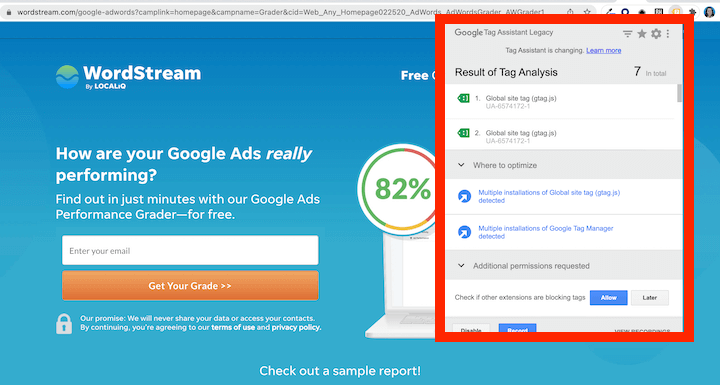
- There’s an easier way to import your offline conversions into Google Ads. It’s with the new self-service OCI helper tool. This way you can integrate offline insights into your entire lead-to-sale customer journey and use that data to find similar high-quality leads online. Learn about this and other new Google Ads features here.
- Choosing the lowest-priced keywords will not lower your CPC. If your best-converting keyword is also your most expensive, you may want to pause campaigns on lower-priced, lower-converting keywords elsewhere to save on spend. Overall, having a healthy mix of low-cost keywords and high-reward keywords will ensure you get the lowest CPC possible without sacrificing conversion quality or quantity. Plenty more where that came from here.
- You can target intent with Google Shopping. With the priority bidding campaign structure, you can use the priority feature and negative keyword lists to get Google to raise or lower your bids for particular queries based on purchase intent—improving your ROAS.
Our favorite Facebook ads pointers
One thing is for sure—Facebook and privacy have been on rocky terms for a while now…

…which is why four out of the five tips below are geared for post-iOS 14 survival.
- Facebook lookalike audiences are not performing as well these days. Instead, try combining interest stacking with Detailed Targeting Expansion; or create custom audiences based on in-platform engagement. Get more post-iOS 15 Facebook ad tips here.

- Target personal demographics. Demographic targeting with Facebook ads will not be impacted by privacy measures, so long as users are sharing that information in their profiles. But be sure to target demographic information users are more inclined to share on Facebook (just got married or just bought a house, rather than education level, for example). Get more privacy-proofed targeting tips here.
- Don’t break up your ad sets too much. Shoot for anywhere between 2-40 million users in your target audiences so Facebook can have enough performance data to get out of the learning phase and give you useful optimization information. Remember too that smaller audiences mean higher CPMs.
- Be open to all placements! It’s best to let your campaigns show up in all placements to start and customize from there. Your audience targeting does not change whether you’re showing on the Audience Network or Instagram, and you can often find lower volume, lower cost placements that drive incremental value. Plus, there are tools available to make sure your ads look good no matter where they appear. More deets here.
- Click-to-Messenger ads have improved. With more features and greater flexibility, you can use this ad type to create a more advanced version of a lead ad with capabilities on par with chatbots used on marketing sites. Find out how to how to use this strategy to generate leads on Facebook without having to deal with Aggregated Event Measurement.
Our best cross-channel marketing tips
I can’t be the only one that thinks about this 90’s board game every time I see “cross-channel…”

…or maybe I am. Either way, here are our best cross-channel marketing tips from the year:
-
- You probably won’t want to promote the same offer on every channel. If a particular offer is performing well on Google but not on Facebook, it might not be the ad but rather the offer. Some platforms may be better suited for specific parts of your funnel. Be in tune with the actions your audience wants to take on each channel—not what actions you want them to take—and tailor your campaigns accordingly. More cross-channel gold here.
- You can target competitor audiences without search campaigns. Instead of simply targeting your competitor’s keywords with search ads, try building custom audiences with competitor URLs or keywords, or running YouTube ads on competitor videos. Here’s how.
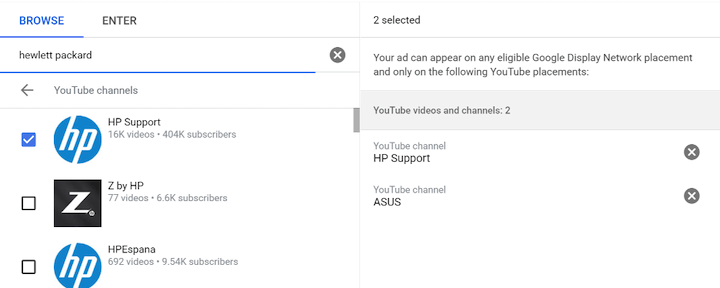
- Get caught up in keyword crossfire: Keywords perform differently on Google vs Bing. Use the Microsoft Advertising Intelligence Excel plugin to uncover (and organize) thousands of keywords. Take the low-volume keywords you find and plug them into Google—you just might be surprised.
- Frustrated with ad scheduling in Google Ads? Microsoft dynamically adjusts your schedule to the timezone of the viewer and allows you to apply ad schedules to individual ad extensions. Learn how to set up Microsoft ad scheduling here.
- Over-the-top (OTT) ads don’t use third-party cookies and are the most socially diverse ad type. They’re also not just for big brands. Learn about them here.
Our prized PPC reporting tips
I guess what it comes down to is…when you’re doing your PPC reporting…do you want to be Frodo? Or Buddy.

- YouTube Studio offers more data than Google Ads. If you’re running video ads or have an organic video strategy, you can get super granular with insights into your video performance with YouTube Studio—like exactly when viewers drop off, device-specific metrics, external sources, and what suggested videos are appearing after yours. Discover YouTube Studio secrets here.
- Use benchmarks. Your ads may be performing better this month than last, but are they actually performing well? In order to compete, you need to have a clear picture of your performance in relation to others in your industry. Use our paid search advertising benchmarks to learn average CPC, CTR, CVR, and CPL for every industry.
- Don’t hate on the search terms report. It may not be what it once was, but it’s the only thing we’ve got. Use the new historical and impression data and make sure you mine any other insights you need from your pre-September 2020 data before Google applies the new privacy thresholds in February! Don’t know what I’m talking about? Here you go.
- PPC reporting is an art. Not just a science! Tell a story behind your data—the “so what” part of the numbers. And caution! The way you visualize the data can impact whether something is deemed successful or not, so play around with different chart types (and don’t choose a deceiving chart just to make yourself look good). Plenty more in our PPC reporting survival guide.
- Want to see (or show your clients) how your Google Display ads are impacting your Search ad performance? Create a Display Traffic Source Audience (either by making sure your Display campaign names always include “display” or manually tagging your Display URLs with a specific source and medium). Add that audience to both Google Ads and Google Analytics. Voila! Full instructions here.
Our most constructive copywriting tips
Not-so-fun facts: Users read about 28% of a webpage on an average visit. 94% of people skip over search ads. If you want to attract readers and customers, you need to have readable, compelling, and memorable copy! Here are five quick tricks you’ll be glad to know:
- Adjectives can be evil. When writing about your products and services, adjectives that describe them are far less credible than plain language statements that start with verbs. (“Advanced segmentation functionalities” vs “Grow segmented lists with quality subscribers,” for example) More ways to write copy that sells here.
- People are more likely to remember the first and last items in a series. This means setting up bulleted lists strategically and also making sure you have strong introductions and conclusions in your emails and blog posts. From our post on how to use psychology to influence buyer decisions.
- The easier it is to read a piece of information, the more we perceive it as true and accurate. So avoid hard-to-read fonts, unnecessary steps, or uncommon words that produce friction, and apparently feelings of falseness. More psychology copywriting here.
- Humans make decisions based on emotions, not logic. Which is why we came up with these 120 words for marketing with emotion and these 273 emotional copywriting words. Use em.
- If you really want to improve your readability, a plugin won’t tell you how. It won’t tell you if you’re over-paragraphing, over-formatting, over-linking, or coming off as condescending. Learn how to improve your readability here.
Our savviest SEO suggestions
Instead of the usual “target the right keywords, “optimize your metadata,” and “get backlinks” advice, I decided to pull a more eclectic mix. (Don’t get me wrong, those are VERY important things, but you can find those in our OG, ever-popular SEO basics post.)
- Schema markup isn’t as far-fetched as you think. It can improve CTR, targeting, brand awareness, and even allow you to put a CTA on the SERP. Two that are important for small businesses are the local business schema markup (add to your home page, about page, and contact page) and the review schema markup. Learn how to implement schema markup here.

- The best thing you can do to help with your page speed is to not just compress, but also resize your images. Even if they are rendering properly on your website, it could be that your site is having to shrink them down to fit—which can impact page load speed. Find out the maximum width for images on your site and make sure your images don’t exceed that. And then use Tiny PNG compressor tool to reduce the file size of your images without compromising quality.
- SEO platforms like Ahrefs and Semrush are helpful, but they only see 30-40% of your website’s total keyword rankings. Google Search Console updates keyword rankings on a daily basis, so rather than waiting 30 days after publishing a post, you can use GSC to quickly learn whether Google is showing your post for the queries you are targeting. Learn more GSC tricks here.
- Even evergreen content depreciates in SEO value. Refresh your posts from time to time by updating images, adding new information or links, fixing broken links, and tweaking your meta titles (find out how to do all that here). You can then change the publish date and Google will acknowledge your fresh content.
- Core Web Vitals trick! These new ranking factor metrics can be developer-heavy, but you can find out if your webpages have unused Javascript on your own. Right-click “Inspect,” click on “Sources,” choose the three dots at the bottom and add “Coverage.”
 Click the load function and you’ll see how much JavaScript is not being used on your webpage.
Click the load function and you’ll see how much JavaScript is not being used on your webpage.
 Plenty more ways to improve your Core Web Vitals here.
Plenty more ways to improve your Core Web Vitals here.
Our most supreme social media marketing tips
Not gonna lie, most of these came from our 60 social media optimization tips round-up.
- Instagram SEO is a thing. You can now search general keywords rather than just hashtags or account names. This means that if you want to rank higher in the feed, you’ll be wise to optimize your bio, post descriptions, and add alt text to images. Find out how to do that here.
- The best time to post on Instagram could actually be at the crack of dawn. Later’s latest research runs counter to the traditional approach of posting on Instagram when engagement is highest. Rather, it could be about posting when competition is lowest. Understand the two schools of thought here.
- Facebook is a local SEO tool. As one of the top three local business directories, make sure your Facebook Business Page is filled out completely, that your location is added to Facebook places, and that you create and curate content specific to your geographic community.

- Your employees have a reach on LinkedIn that is 10x stronger than your company page alone. Share your blog posts and announcements with your team and make it easy for them to share on social. More ways to increase your online presence here.
- Avoid adding links to all of your social media posts. Marketers who are particularly crunched for time use organic social primarily to post links, but if you can help it, try to mix it up. Your followers will appreciate digestible tidbits they can get value out of without having to leave the platform and spend 10 minutes reading. More social media competitive analysis tips here.
Our most esteemed email marketing tips
Did you know that email marketing celebrated its 43rd birthday this year? And it is going strong. Here are our top email marketing tips to get the most out of this super-solid channel.
- You need to send plain text emails. That is, a plain text version of every HTML email you send. They may not be pretty, but they have a lot of advantages. First, spam filters want to see the plain text alternative of an email. Second, some devices need the plain text version, like HTML-disabled devices, smartwatches, accessibility devices and voice assistants. And lastly, some people prefer them because they’re simpler, they load faster, and they show the user all of the links in the email. Plus, they feel more secure because it doesn’t feel like there is anything secret downloading in the background. More email marketing tips here.
- Subtle additions to emails can make a big difference. In our B2B email copywriting post, we talk about adding a testimonial toward the bottom of a product email, alternating CTA button colors, and signing off with something friendly and upbeat.
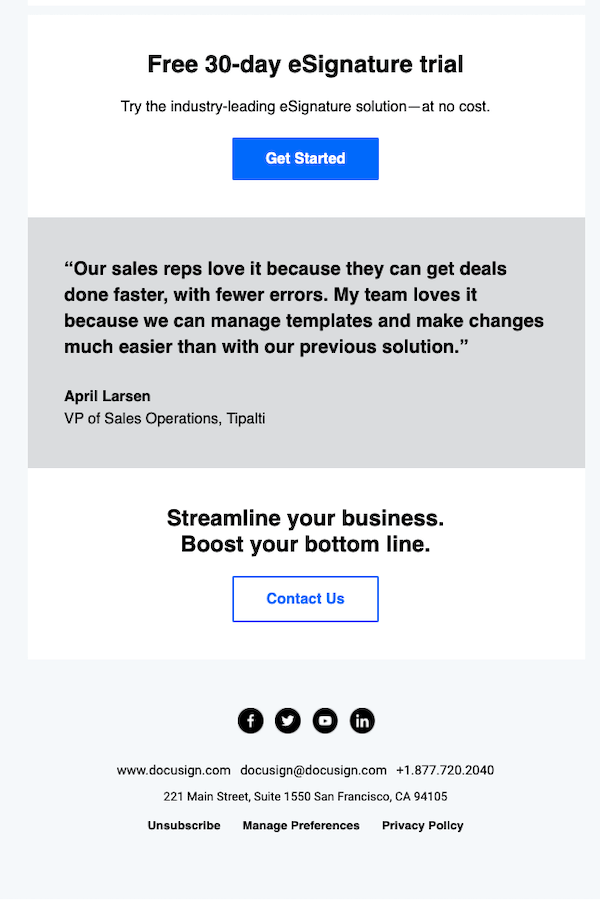
- Stop A/B testing your subject lines! Well, that’s assuming you’re measuring their success by open rate. Due to Mail Privacy Protection offered on Apple iOS 15 and macOS Monterey, metrics and data related to email opens (date/time opened, if it was opened, number of times opened, where it was opened, who opened it) are no longer reliable. You’re better off A/B testing your body content. Also, be sure to rebuild any flows or dynamic campaigns based on open-related data. Privacy-proof your email marketing here.
- Trigger emails are different from nurture emails. Trigger emails get sent based on a specific event, like if a user completes a purchase, submits a review, abandons their cart, or even if it’s their birthday or customer anniversary. Nurture emails, on the other hand are typically sent on a fixed schedule after the initial email is sent, and may have different paths based on the user’s behavior with each email. Either way, you’ll need an email automation platform to implement these campaigns.
- A creative newsletter name can improve your performance. If you want to get more newsletter signups, stand out in your readers’ inboxes, be remembered, build a community around your brand, and improve your word-of-mouth promotion, take a look at these 75+ creative newsletter names for inspiration.
Our craftiest customer engagement tips
Good customer engagement: Proactive. Reactive. Interactive. Attractive.
Bad customer engagement: Underactive. Overactive. Psychoactive. Radioactive.
And now, your tips:
-
- Instead of just asking customers for a review, ask through email if you can get a quote from them for your website. In this manner, there’s no on-the-spot pressure and knowing that it will appear on your website, they’ll make sure it makes them look good too.
- If you have to increase your prices, your price change email should convey the exact increase, why you’re increasing it, when it will take effect, and if there is any action needed on their part. Don’t get into the nitty-gritty details of the increase. Customers just want to know the facts. Plus, too much explanation starts to sound defensive and apologetic.
- Respond to negative reviews. 67% of people say that once a business loses its trust, there’s no gaining it back. Yikes! But just because a customer is unhappy doesn’t mean they’ve lost trust in you. A prompt and proper response to a negative review can prevent permanent damage and sometimes even turn into a loyal relationship!
- Better customer engagement doesn’t mean a barrage of communications. Instead, fewer, more meaningful touchpoints can be better for building trust, which is key for maintaining long-term customer relationships. Discover seven non-annoying customer engagement strategies here.
- When gathering information about your client to establish a meaningful connection, collect “hard” and “soft” information on them. As in, not just their target audience, competitors, software, and budget, but also what they define as success, what their mission statement is, what the hobbies and interests are of the individuals you’ll be working with.

Be ready for more marketing tips in the year to come
And that’s a wrap! We’ve got tons more in store for next year. Be on the lookout for a hefty dose of landing page tips, copious amounts of copywriting psychology hacks, a slew of Google and Facebook secrets, and of course, creative inspiration. Wear a helmet because your brain just might explode.
The post The 45 Best Marketing Tips, Tricks, & Hacks We Revealed This Year—in Every Category appeared first on WordStream.
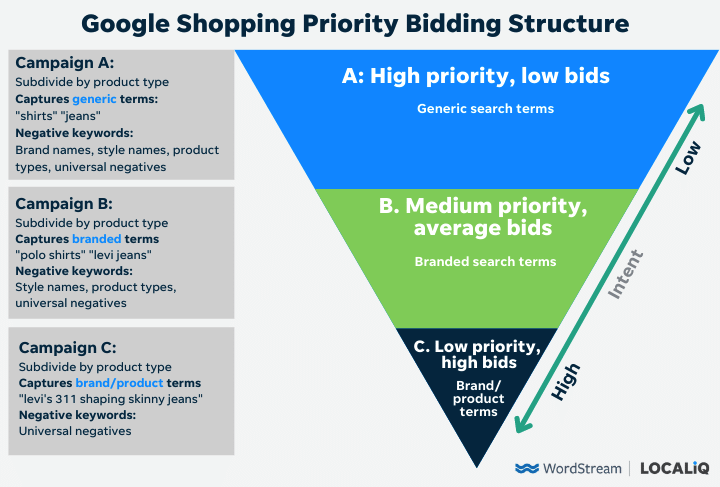
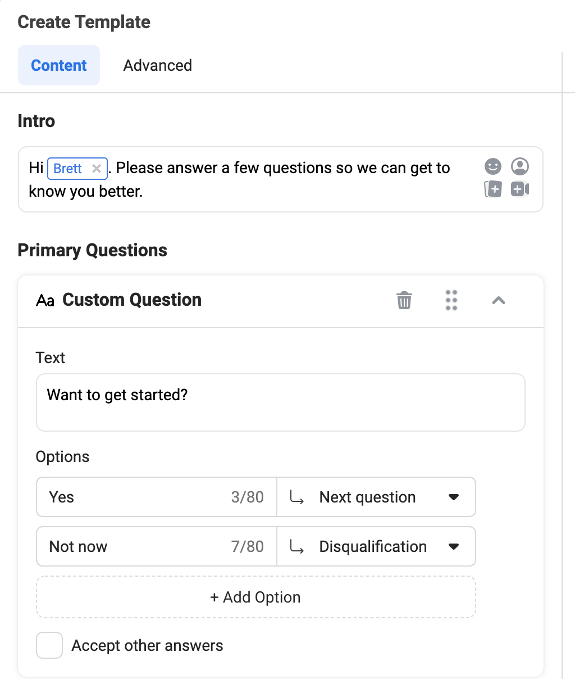
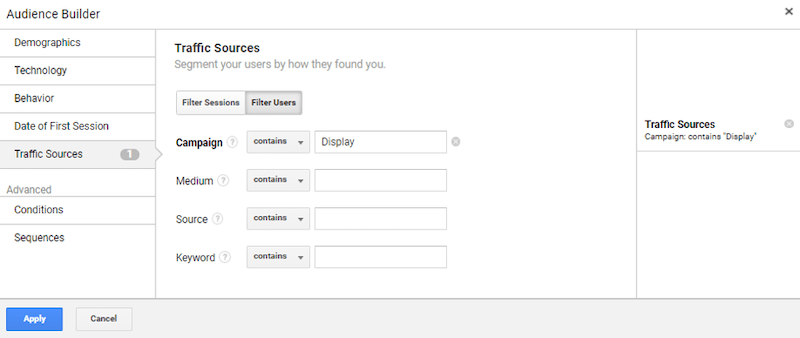
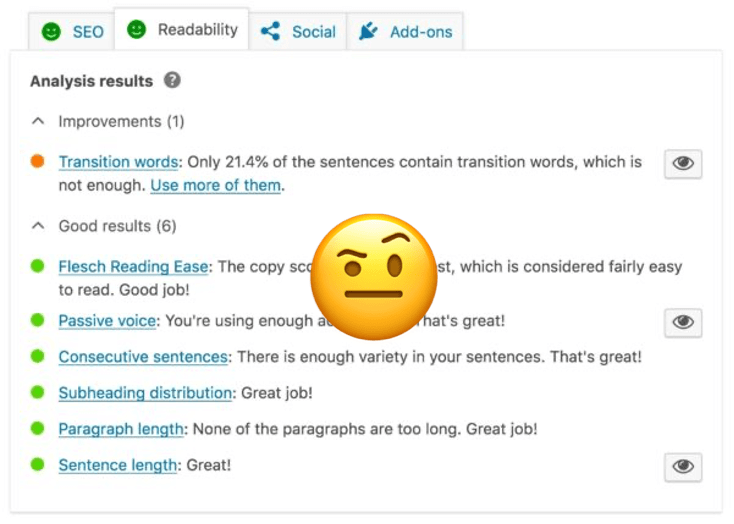




Recent Comments